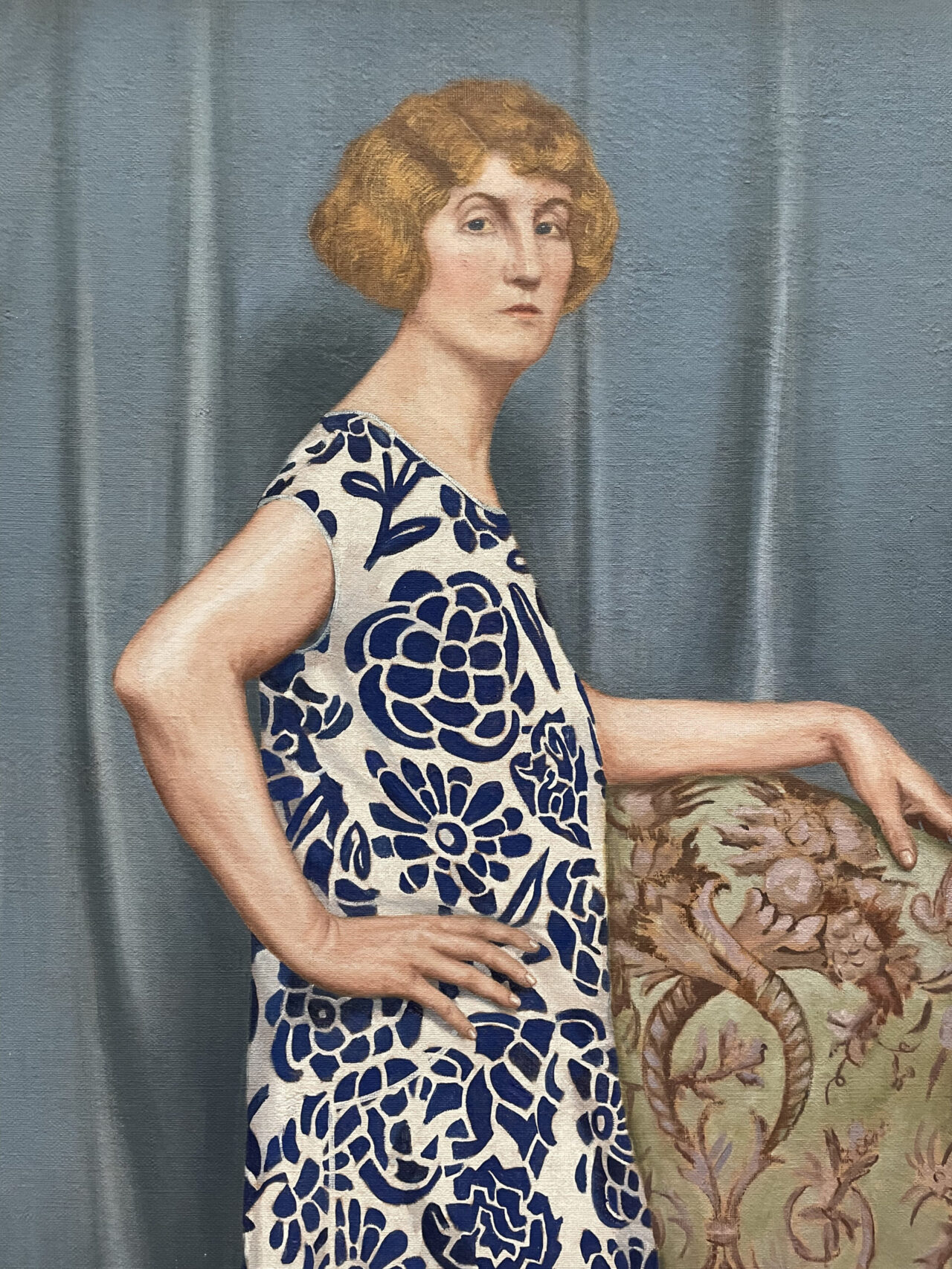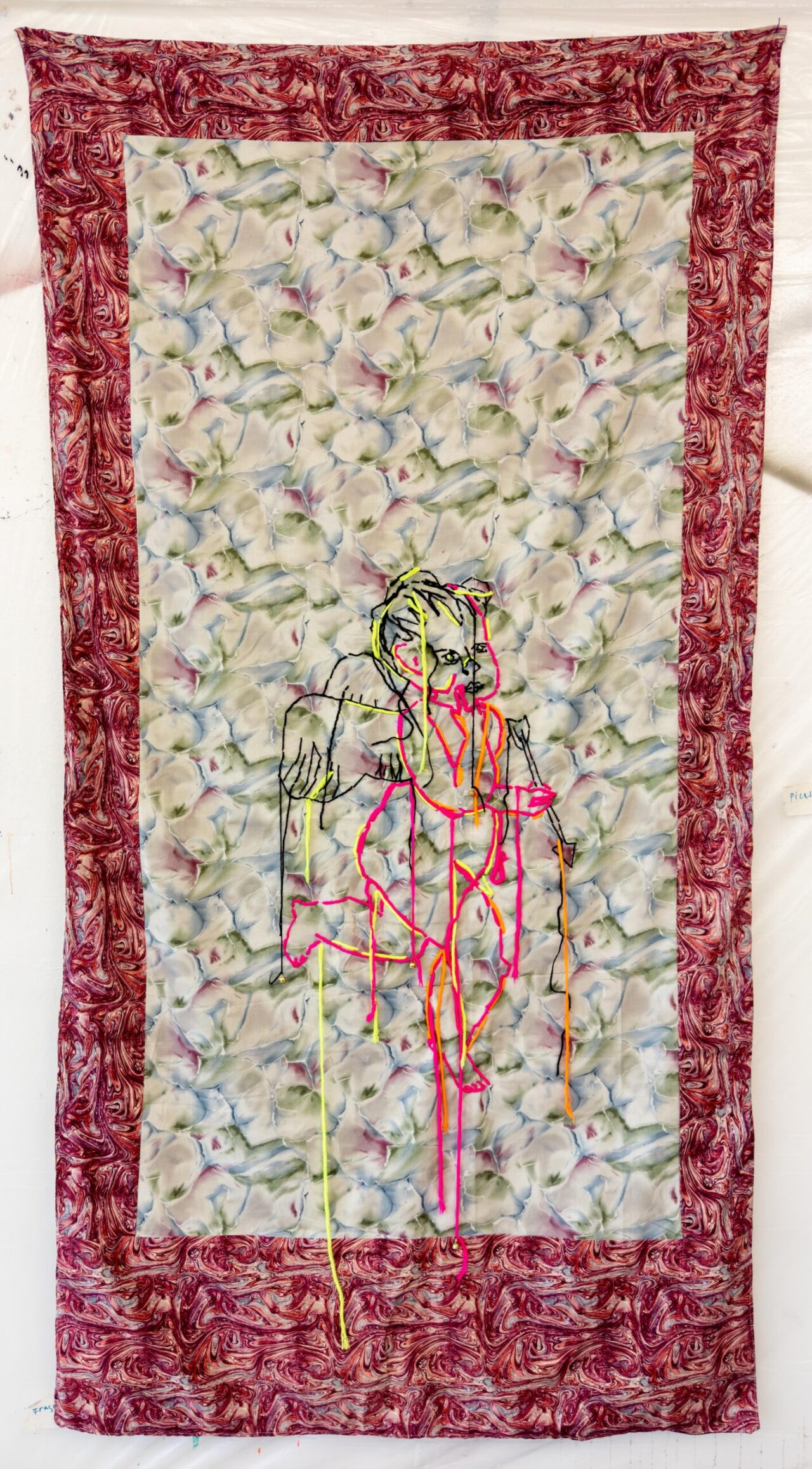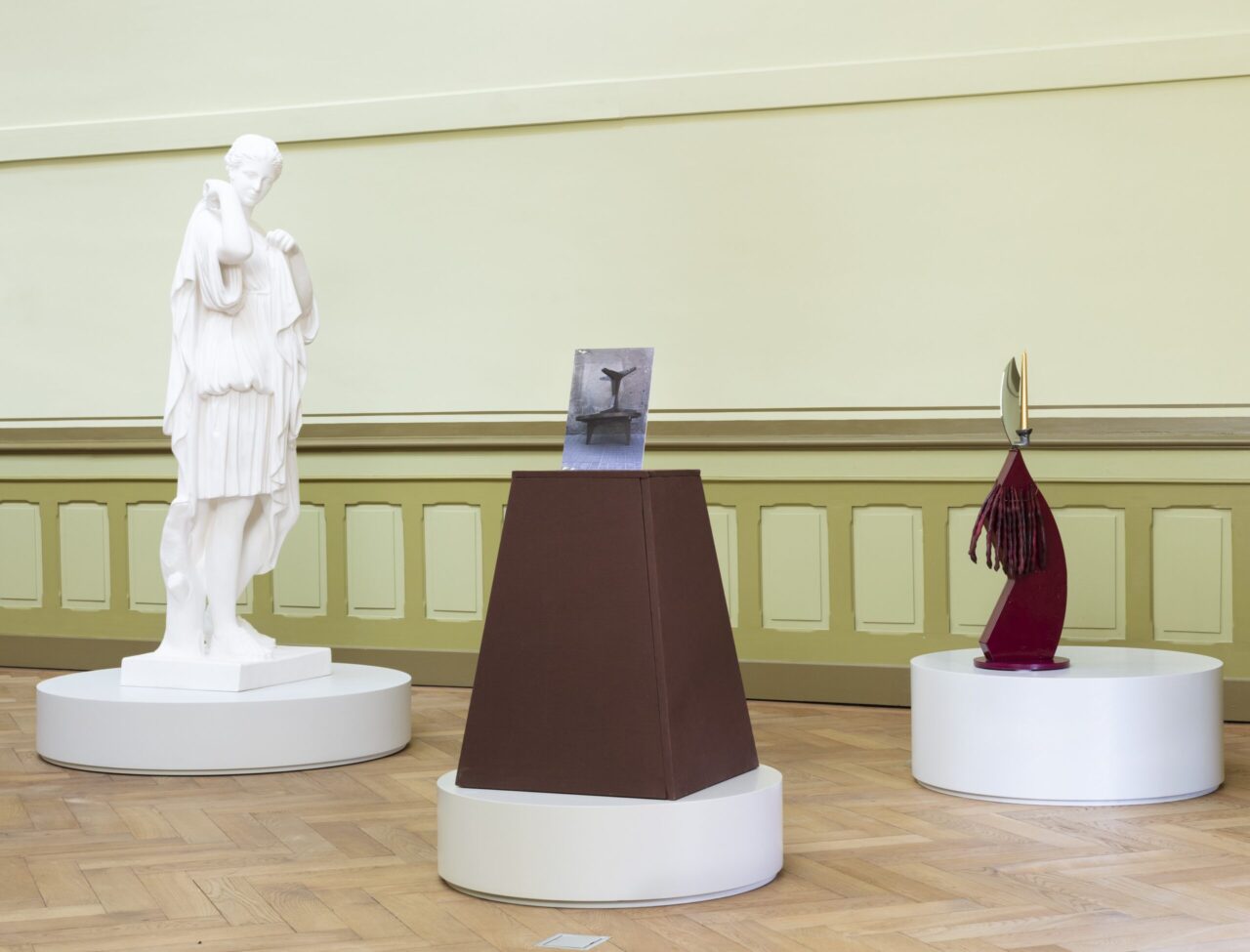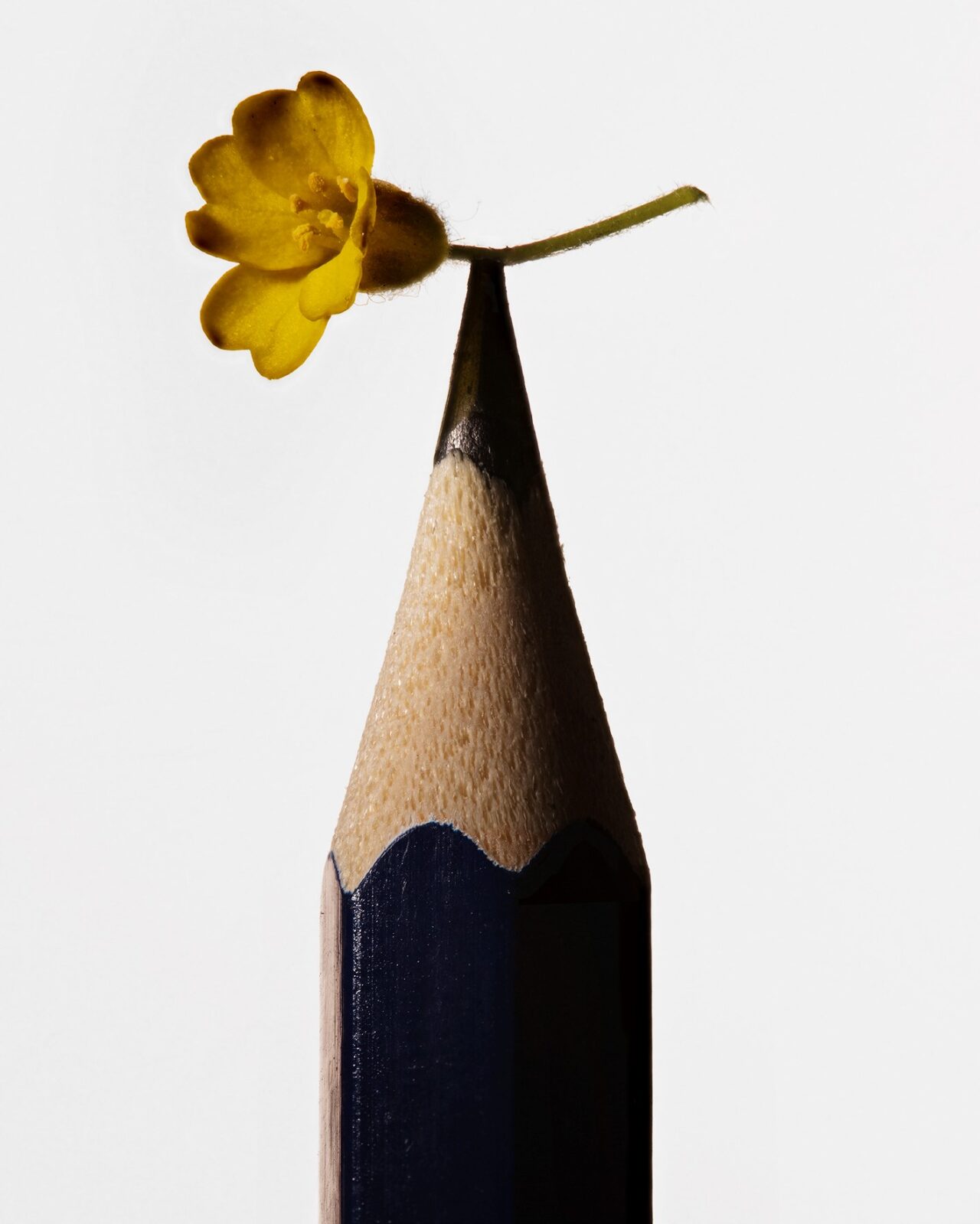FROM THE COLLECTION
The paintings of Alexandre Girod (1889-1929) are so fascinating that the ornamental dimension of the garment dominates the composition. The painter from Neuchâtel, who died at just 40 years old, is little known to the public. A solitary artist, he produced much but exhibited little. Influenced by the great Spanish masters of his childhood in Madrid and inspired by the Tuscan art of his formative years in Florence, Girod produced allegorical and religious compositions imbued with mysticism, Jura landscapes and full-length portraits.
The two portraits on display illustrate the precision of the artist’s pictorial gesture. The simplicity of the lines and the intensity of the colors are brought to bear on the treatment of the fabric. Adorned with flattened plant motifs, the fabrics are striking in their powerful execution. While in Harmonie en bleu (Portrait de ma femme), their presence competes with the subject, shaping her silhouette, in Portrait de Madame B. G., they dress the space in which the model stands. These works testify to Girod’s interest in decorative composition, which he fully explored in large format.
The son of a Jura watchmaker expatriated to Spain, Alexandre Girod was born in Madrid in 1889. After interrupting his watchmaking studies in Le Locle, he entered the Ecole des Beaux-Arts in Geneva in 1910, continuing his training in Florence before settling in the hills above Le Locle in 1913 with his wife, Elisabeth Meylan. The couple’s home in Les Petits-Monts remains their home base, despite frequent travels. His work met with success abroad, being shown in Madrid in 1922, London in 1924 and Paris between 1923 and 1928. Following his untimely death in 1929, his widow opened a museum dedicated to his work on the family estate. Maintained as it was until 1984, the Musée Alexandre Girod closed its doors for good, and the entire collection was transferred to the Musée des Beaux-Arts in Le Locle the following year.





